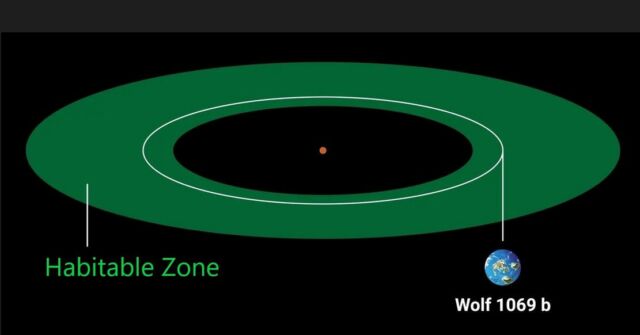Astronomers discovered a potentially habitable rocky Earth-mass exoplanet, 31 light-years from us.
A team of astronomers led by MPIA scientist Diana Kossakowski discovered an Earth-mass exoplanet orbiting in the habitable zone of the red dwarf star Wolf 1069.
Above: Artist’s conception of a rocky Earth-mass exoplanet like Wolf 1069 b orbiting a red dwarf star. © NASA/Ames Research Center/Daniel Rutter
Although the rotation of this planet, named Wolf 1069 b, is probably tidally locked to its path around the parent star, the team is optimistic it may provide durable habitable conditions across a wide area of its dayside. The absence of any apparent stellar activity or intense UV radiation increases the chances that Wolf 1069 b could have retained much of its atmosphere. Therefore, the planet is one of only a handful of promising targets to search for habitability markers and biosignatures.

© MPIA graphics department/J. Neidel
“As a result, the so-called habitable zone is shifted inwards”, mentions Kossakowski. Therefore, planets around red dwarf stars such as Wolf 1069 can be habitable even though they are much closer than the Earth is to the Sun. Co-author Jonas Kemmer from Heidelberg University adds, “The CARMENES instrument was built for the very purpose of making it easier to discover as many potentially habitable worlds as possible.”
The results appear in the journal Astronomy & Astrophysics.
source Max Planck Institute






Leave A Comment